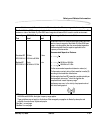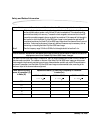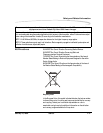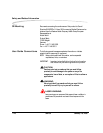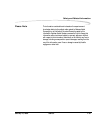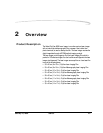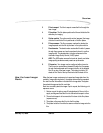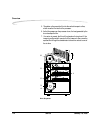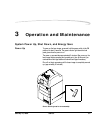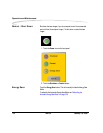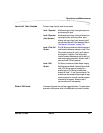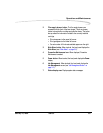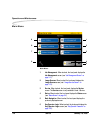
Overview
January 10, 2006 5E6155 2-3
How the Laser Imager
Works
When the laser imager receives a print request and image data from the
modality (image capturing device), the system determines the requested
film size from the information included with the image data. The system
then selects the appropriate film cartridge.
Each time a modality sends the imager a print request, the following print
sequence occurs.
1. Suction cups in the pickup area lift a single sheet of film out of the
supply cartridge and feed the film into the vertical transport rollers.
2. The vertical transport rollers move the film down to the film platen
(exposure area).
3. The platen rollers move the film into the film platen.
4. The platen holds the film while the scanner writes the image onto the
film.
3Film transport. The film transport moves the film through the
laser imager.
4Film platen. The film platen positions the film and holds the film
stationary for imaging.
5Optics module. The optics module writes (exposes) the image
onto the film while the film is positioned on the film platen.
6 Film processor. The film processor uses heat to develop the
image exposed onto the film by the laser in the optics module.
7 Densitometer. The densitometer receives the film after it passes
through the processor and performs a density check to confirm
image quality. The densitometer is the key component of the
Automatic Image Quality Control (AIQC) system.
8AIQC. The AIQC system ensures that contrast, density, and other
image-quality parameters meet preset user preferences.
9Film sorter. Your imager may be configured without a sorter.
The film sorter receives the processed film after the film passes
through the densitometer and transports the film to the selected
film bin on top of the laser imager. The bottom bin holds 125
sheets of film. Each of the top five bins holds 30 sheets of film.



